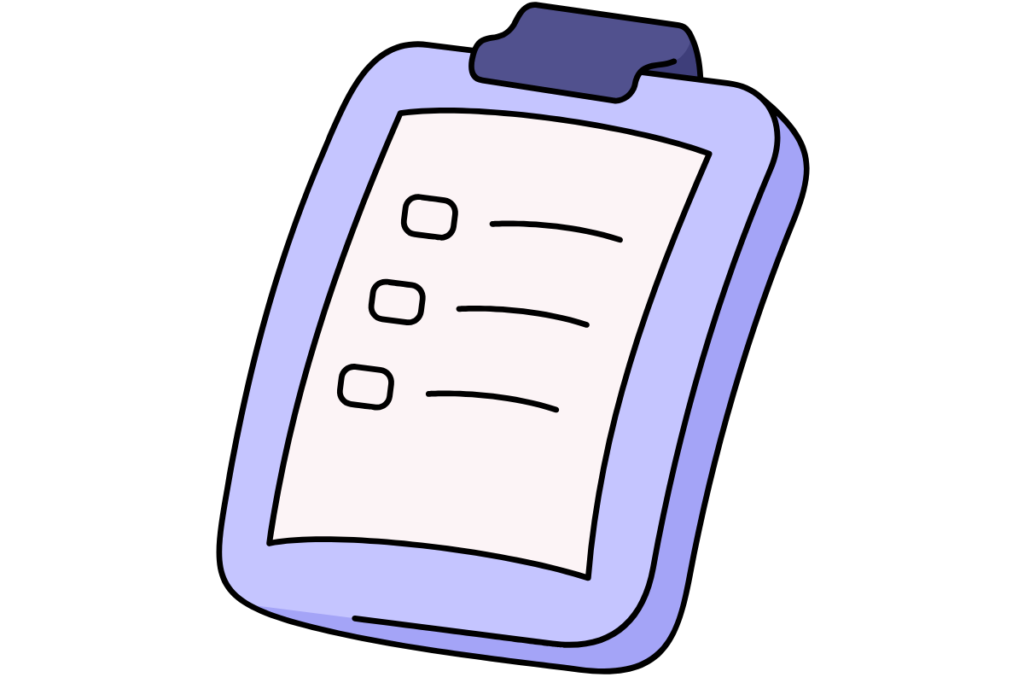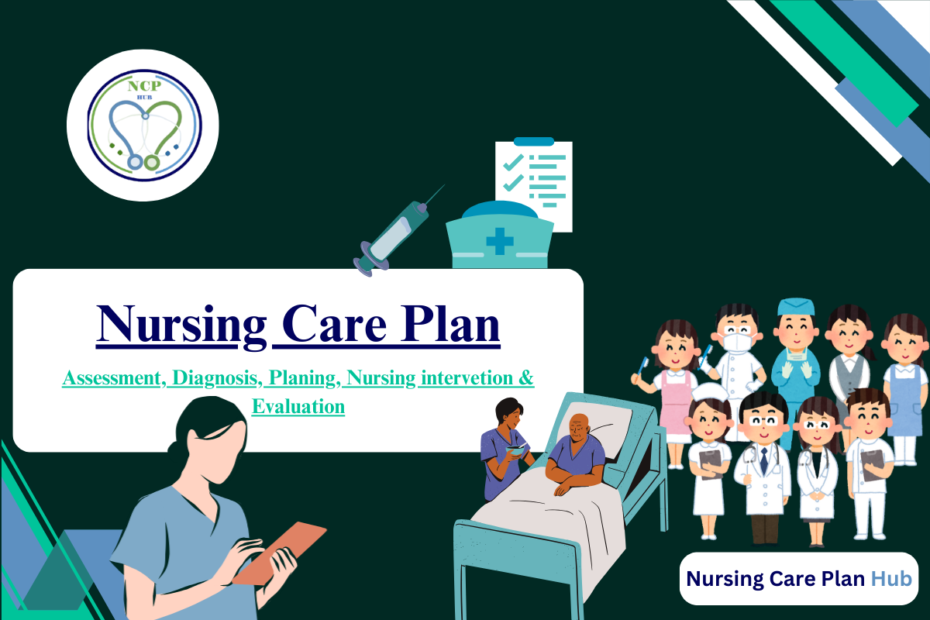A nursing care plan is a detailed, patient-centric document that guides nurses in providing high-quality care. It helps nurses organize and prioritize patient needs, ensuring that all aspects of the patient’s health are addressed. The plan includes essential elements such as nursing diagnoses, expected outcomes, interventions, and evaluations. Nursing care plans are integral in coordinating the efforts of healthcare professionals and improving patient outcomes through organized and focused care.
Table of Content:
- 1. Introduction: Understanding the Importance of a Nursing Care Plan
- 2. Understanding the Components of a Nursing Care Plan
- 3. Step-by-Step Process for Writing a Nursing Care Plan
- 4. Common Challenges in Writing a Nursing Care Plan
- 5. Tips for Writing an Effective Nursing Care Plan
- Examles from NCP Hub:
- 6. Conclusion: The Impact of a Well-Structured Nursing Care Plan
1. Introduction: Understanding the Importance of a Nursing Care Plan
The primary purpose of a nursing care plan is to promote holistic care by addressing the physical, emotional, and psychological needs of patients. It allows nurses to develop a personalized approach that aligns with the patient’s unique needs, health status, and preferences. Furthermore, nursing care plans facilitate communication between different members of the healthcare team, ensuring that everyone involved in the patient’s care is on the same page.
In this article, we will explore the essential components of a nursing care plan and provide a detailed, step-by-step guide to help you craft an effective care plan. Whether you are a nursing student or a seasoned nurse, understanding how to develop a comprehensive care plan will enhance your ability to deliver excellent patient care.

2. Understanding the Components of a Nursing Care Plan
A. Assessment: First component of Nursing Care Plan
The first step in writing a nursing care plan is conducting a thorough assessment. This phase is critical because it provides the nurse with essential patient data, which will guide the entire care planning process. The assessment includes subjective data, which are the patient’s reports of symptoms, feelings, and health history, and objective data, such as physical examination findings, vital signs, lab results, and imaging studies. Nurses also gather information from family members or other caregivers, which helps in understanding the patient’s overall health status.
In nursing practice, various tools and methods are used to collect data. These may include interviews with the patient and family, physical assessments, nursing history, and standardized assessment scales. The data collected during the assessment phase helps nurses identify the patient’s current condition, risk factors, and other relevant health issues, ensuring that the nursing care plan is comprehensive and accurate.
B. Diagnosis: Identifying Nursing Diagnoses
Once the data is collected, the next step is to formulate nursing diagnoses. A nursing diagnosis is a clinical judgment about a patient’s health condition that nurses identify based on the assessment data. Nursing diagnoses focus on the patient’s response to health problems or conditions, rather than on the disease itself. These diagnoses guide the planning of interventions and outcomes. The NANDA-I taxonomy is widely used in nursing practice to classify and standardize nursing diagnoses. To explore NANDA-I guidelines, visit this NANDA resource.
Examples of nursing diagnoses include “ineffective airway clearance,” “acute pain,” and “risk for infection.” Using NANDA-I guidelines ensures that the diagnoses are accurate, clear, and based on the patient’s specific health condition. Accurate nursing diagnoses are essential for the development of an effective nursing care plan.
C. Outcomes/Goals: Setting Realistic and Measurable Goals
Setting clear and achievable outcomes is a vital part of the nursing care plan. Goals should be specific, measurable, and time-bound, ensuring that progress can be tracked effectively. The SMART goal-setting framework is commonly used in nursing practice. SMART goals are Specific, Measurable, Achievable, Relevant, and Time-bound, providing clarity and direction for patient care.
For example, if the patient’s diagnosis is “ineffective airway clearance,” a SMART goal could be: “The patient will demonstrate improved breathing patterns, maintaining oxygen saturation of 95% or higher within 24 hours.” This goal is specific (improve breathing patterns), measurable (oxygen saturation level), achievable (based on the patient’s condition), relevant (directly related to the diagnosis), and time-bound (within 24 hours). By setting clear goals, nurses can focus their efforts on achieving specific, positive patient outcomes.
D. Interventions: Selecting Evidence-Based Actions
Interventions are the nursing actions designed to address the patient’s nursing diagnosis and achieve the desired outcomes. These interventions can be classified into three categories: independent, dependent, and collaborative. Independent interventions are actions that nurses can initiate on their own, such as patient education and monitoring vital signs. Dependent interventions require a physician’s orders, like administering medications. Collaborative interventions involve other healthcare professionals, such as physical therapists or dietitians, to deliver comprehensive care.
Evidence-based practice (EBP) plays a key role in selecting the most appropriate interventions. EBP involves using the best available research, clinical expertise, and patient preferences to inform nursing practice. For a deeper understanding of EBP in nursing, refer to this article from PubMed.
E. Rationale: Providing Evidence Behind Interventions
Each intervention within the nursing care plan should have a clear rationale explaining why it is necessary and how it will help achieve the desired outcomes. This rationale should be based on clinical guidelines, scientific research, or nursing theories. For example, if the intervention is “administer pain medication,” the rationale might refer to studies that show the positive impact of specific medications in reducing pain levels and improving the patient’s comfort. Providing a rationale ensures that the care plan is grounded in sound clinical reasoning.
F. Evaluation: Assessing the Effectiveness of the Care Plan
The evaluation phase is crucial for assessing whether the nursing care plan has been successful in achieving the set goals. Nurses evaluate whether the interventions were effective and whether the patient has made progress toward the established outcomes. Evaluation is an ongoing process that allows nurses to make adjustments to the care plan based on the patient’s progress.
If the desired outcomes are not achieved, nurses may need to revise the nursing care plan by setting new goals, altering interventions, or reassessing the diagnosis. Evaluation ensures that the care plan remains dynamic, flexible, and tailored to the patient’s changing needs.

3. Step-by-Step Process for Writing a Nursing Care Plan
Step 1: Data Collection: Gathering Relevant Patient Information
The foundation of an effective nursing care plan lies in the data collection phase. To begin, nurses must gather both subjective and objective data. Subjective data includes the patient’s self-reported symptoms, feelings, and concerns, while objective data includes measurable factors like vital signs, lab results, and physical assessments. The nurse should use standardized tools, such as assessment forms or checklists, to ensure that no relevant information is overlooked.
Additionally, data collection should also involve a review of the patient’s medical history, any previous treatments or surgeries, and information provided by family members or caregivers. A thorough assessment enables the nurse to develop a comprehensive understanding of the patient’s health, which will inform the nursing care plan.
Step 2: Identifying Nursing Diagnoses: Analyzing Patient Data
Once the data is collected, the nurse must analyze the information to identify potential nursing diagnoses. Using NANDA-I guidelines, the nurse formulates diagnoses based on the patient’s responses to their health problems. These diagnoses will guide the planning of appropriate interventions.
The nurse must also consider whether the patient is experiencing actual health problems or is at risk of developing certain conditions. For example, a patient who is experiencing shortness of breath might have a diagnosis of “ineffective breathing pattern,” while a patient who is at risk for developing a pressure ulcer might have the diagnosis “risk for impaired skin integrity.”
Step 3: Setting SMART Goals: Establishing Clear Patient Outcomes
The next step in writing a nursing care plan is to set SMART goals. These goals should be directly related to the patient’s nursing diagnoses and focused on achieving positive health outcomes. For example, for a patient with an impaired skin integrity diagnosis, a SMART goal might be: “The patient’s skin will remain intact with no signs of pressure ulcers during the hospitalization period.”
By setting clear, measurable goals, nurses can ensure that their interventions are focused and aligned with the patient’s needs. This also enables nurses to track the patient’s progress and adjust the care plan as necessary.
Step 4: Developing Interventions: Planning Specific Nursing Actions
Nursing interventions are the core actions taken to achieve the goals set in the nursing care plan. Interventions should be specific, measurable, and evidence-based. For instance, if the goal is to reduce pain, interventions might include administering prescribed pain medication, providing comfort measures like repositioning, or offering non-pharmacological pain relief strategies.
Nurses should also prioritize interventions based on the patient’s most immediate needs. For example, if a patient is at risk of falling, interventions related to patient safety, such as fall precautions, should take priority over other goals.
Step 5: Evaluation and Revision: Assessing Progress and Making Adjustments
Once interventions have been implemented, the nurse evaluates the patient’s response to the care plan. Are the goals being met? Is the patient improving? If not, adjustments must be made. The nurse might need to modify the interventions, set new goals, or even revise the nursing diagnoses based on the patient’s evolving condition.

4. Common Challenges in Writing a Nursing Care Plan
Lack of Specificity in Goals and Interventions
A common challenge when writing nursing care plans is the lack of specificity in goals and interventions. Goals should be clear and measurable to track progress effectively. For instance, rather than stating “improve mobility,” the goal should specify the desired outcome, such as “the patient will walk 10 feet with assistance by the end of the second day post-surgery.” Being specific ensures that interventions are focused and patient progress can be evaluated.
Overlooking Patient Preferences and Needs
Another challenge is failing to consider the patient’s preferences, values, and needs when writing a nursing care plan. Nurses must ensure that the care plan reflects the patient’s unique perspectives and goals, as this will promote patient engagement and satisfaction with the care provided.
Inconsistent Documentation
Inconsistent documentation of the nursing care plan can lead to confusion and miscommunication between healthcare providers. It is essential to ensure that all aspects of the care plan are clearly documented and updated regularly. This allows all members of the healthcare team to stay informed about the patient’s progress and care needs.
5. Tips for Writing an Effective Nursing Care Plan
Be Patient-Centered
An effective nursing care plan should be tailored to meet the individual needs, preferences, and values of the patient. Nurses should involve the patient in the care planning process, ensuring that their concerns and goals are reflected in the plan. This patient-centered approach promotes better patient engagement and adherence to the care plan.
Use Evidence-Based Practices
It is essential to base nursing interventions on the best available evidence. Using evidence-based practices ensures that the care provided is grounded in scientific research, leading to better patient outcomes. Nurses should stay updated with the latest research to incorporate the most effective interventions into their care plans.
Document Clearly and Concisely
Clear and concise documentation is critical for an effective nursing care plan. Use standardized terminology and avoid ambiguity to ensure that everyone involved in the patient’s care understands the plan and can follow it effectively. This will prevent miscommunication and ensure that the patient receives the highest standard of care.
Examles from NCP Hub:
- Nursing Care Plan on Sepsis
- Nursing Care Plan for Fluid Volume Deficit in Pediatric Patient
- Nursing Care Plan for Gastroenteritis
- Nursing Care Plan on Insomnia
- Nursing Care Plan for Impaired Gas Exchange
- Nursing Care Plan for Impaired Skin Integrity: Pressure Ulcer
- Nursing Care Plan on Hypokalemia
- Nursing Care Plan on Hypertension or High BP
- Nursing Care Plan for Postoperative Pain
- Nursing Care Plan on Fever: Hyperpyrexia and Viral Fevers
6. Conclusion: The Impact of a Well-Structured Nursing Care Plan
In conclusion, writing an effective nursing care plan is an essential skill for nurses, as it directly impacts patient care and outcomes. A well-structured care plan ensures that all aspects of a patient’s health are addressed. Learn more about how nursing care plans contribute to improved patient outcomes by visiting the Nursing Association website.
Whether you are a nursing student or a seasoned nurse, mastering the art of writing a nursing care plan will improve your ability to deliver high-quality, patient-centered care. Remember, a nursing care plan is a dynamic document that requires ongoing evaluation and modification to adapt to the patient’s changing needs. With these tools and tips, you can write effective care plans that promote better health outcomes and patient satisfaction.
